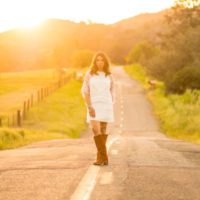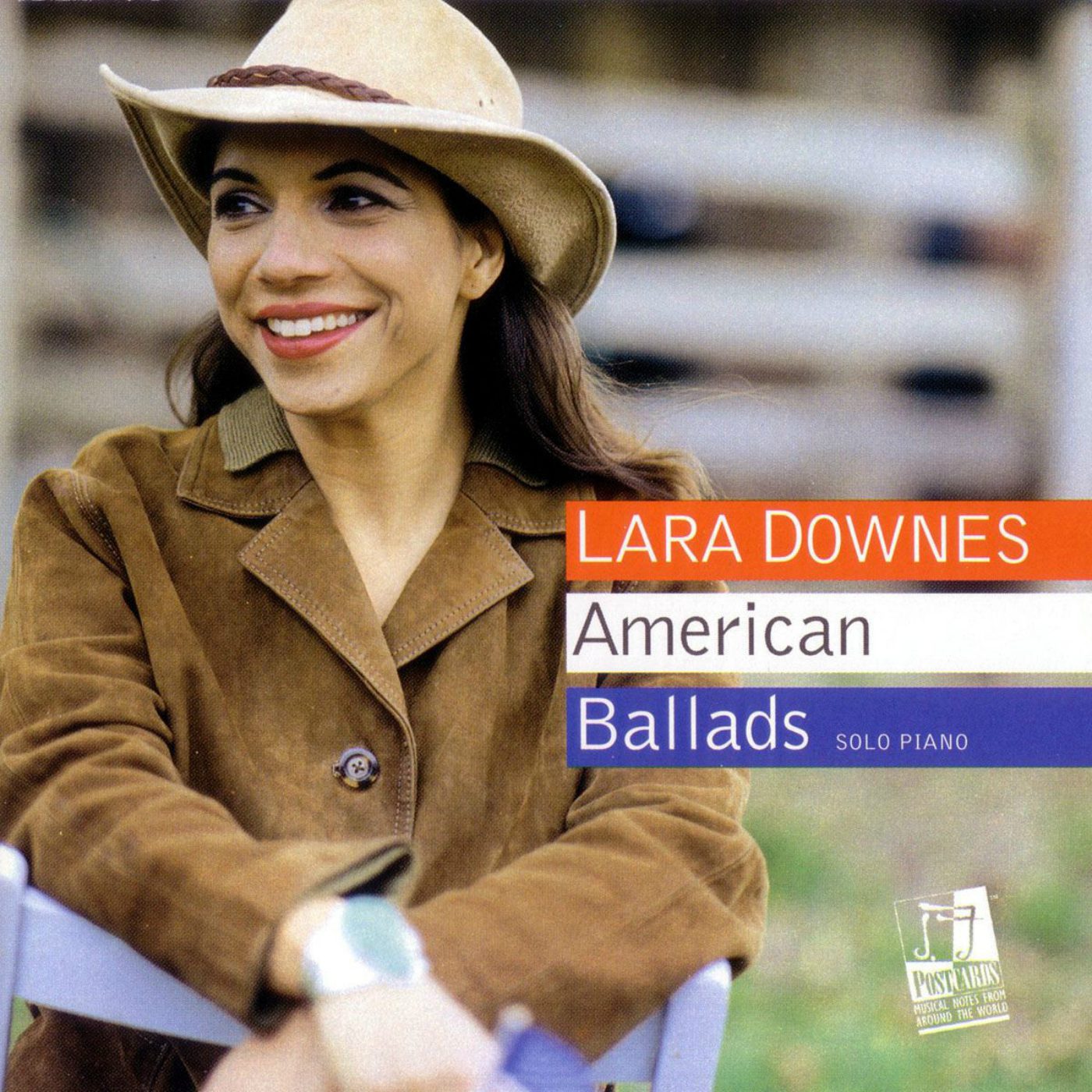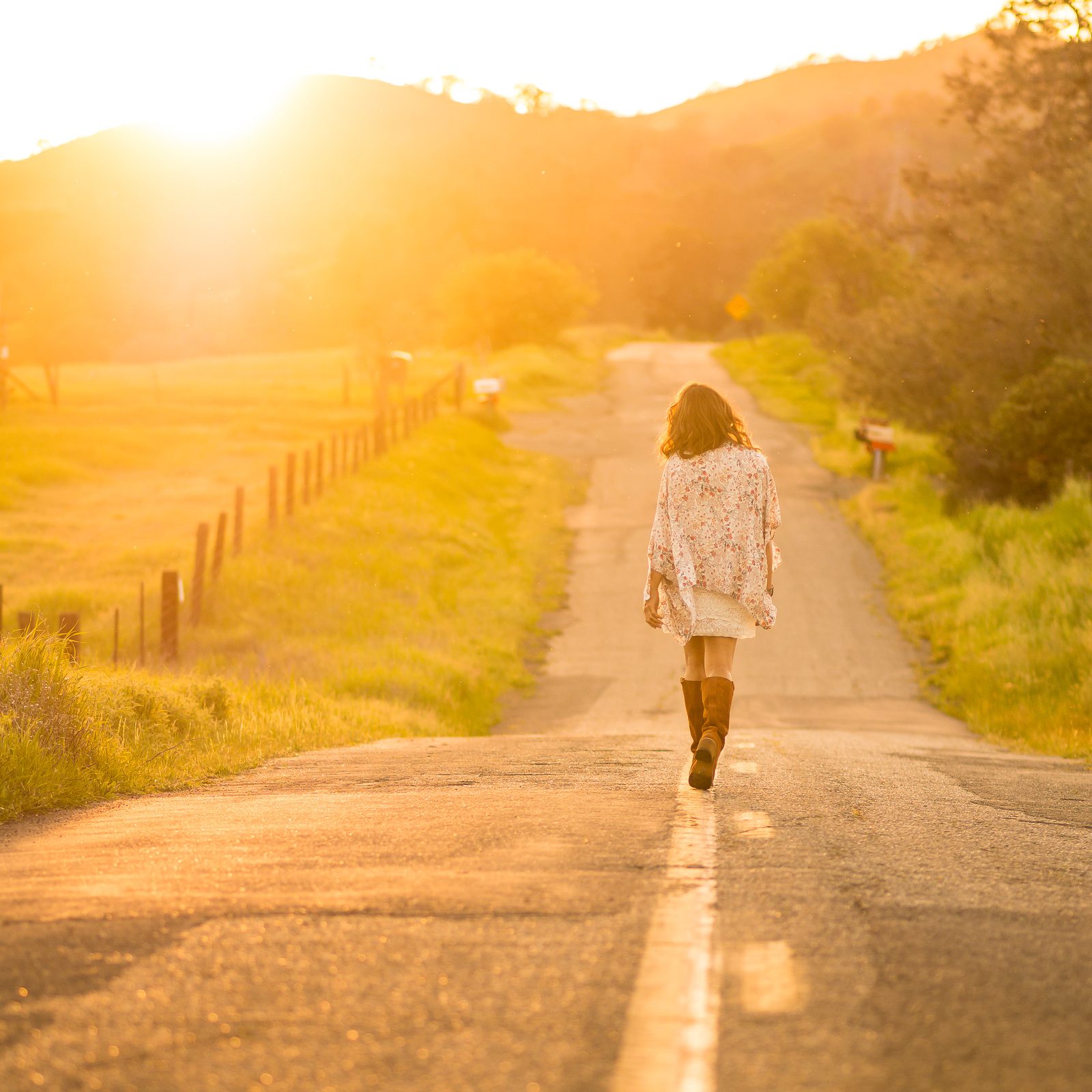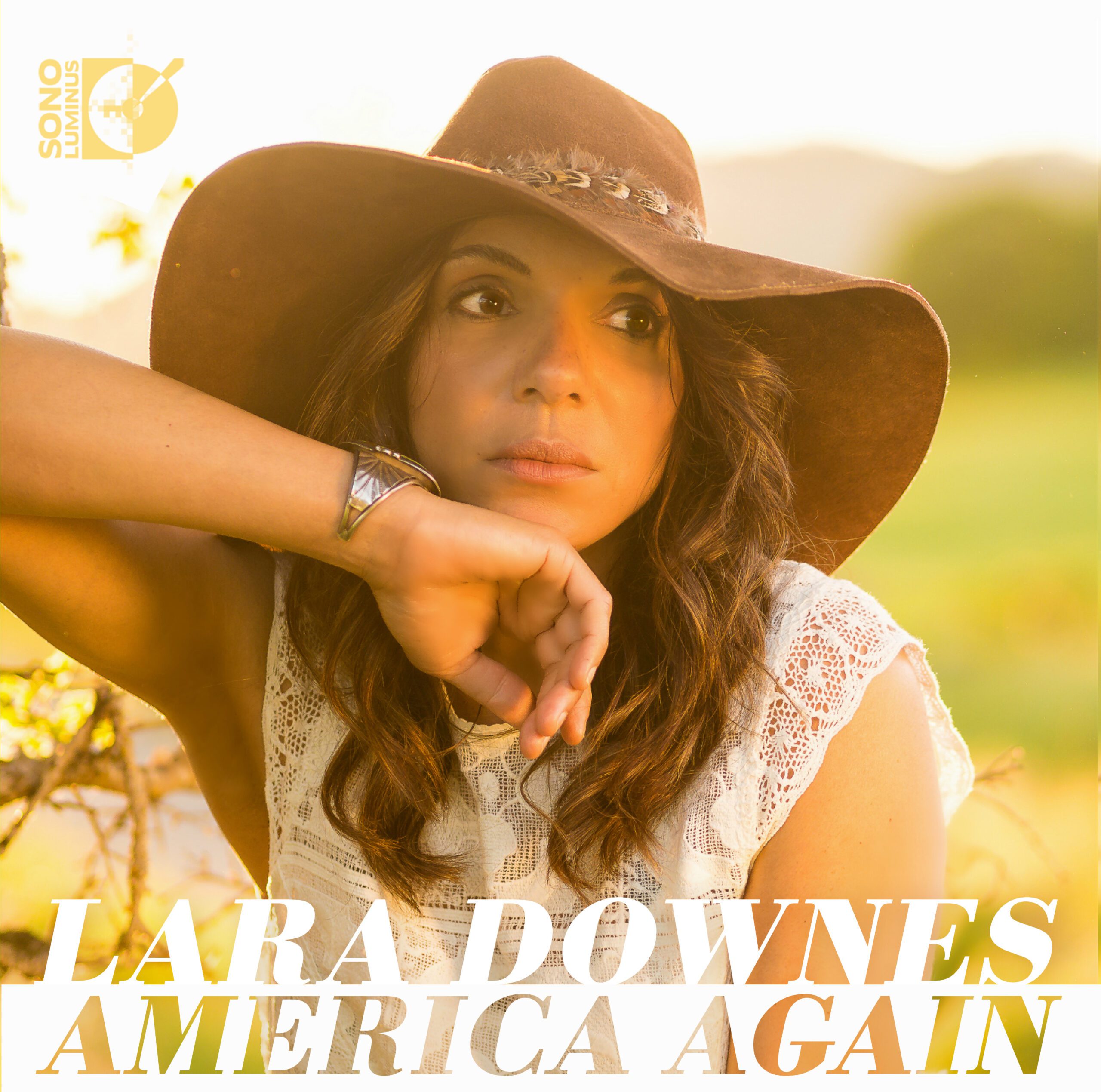The first time I ever had my makeup done professionally was fifteen years ago, on a photo shoot for the cover of my album American Ballads. The record was a compilation of American piano music from the 1930s and 40s, by composers like Aaron Copland, with that definitively, obviously American sound of his. The plan for the cover was full-on Americana: me looking fresh-faced and happy, the young unknown that I was, posed in an obviously American landscape, a weathered barn in an overgrown field.
The record label brought in a photographer, with a hair and makeup team in tow. They sat me down and took out a massive kit of creams and powders, brushes organized by size, shape and function. The transformative possibilities of the moment were thrilling. I sat back in the chair, ready for Cinderella magic. But as the sponges and brushes dabbed and swiped and blended, I started to worry. The colors just seemed wrong: too pink, too pale, too… white. A layer of peachy-beige matte foundation, then a generous dusting of pale pink powder, then cherry red lipstick to fill in a strictly outlined lip. As the applications progressed, the mirror showed me a strange kabuki mask, the glow of my Jamaican/Jewish skin and the freckles on my nose obscured by layers of chalky taupe. But, I thought then, what did I know? There were, perhaps, mysteries in the equation of lights and camera that would unveil the real me, only polished and perfected. I deferred, said nothing, went through the photo session eager to please, smiling when directed, even when the art director came up with the idea for the shot (that is thankfully, mercifully, hidden inside the CD booklet) in which I am standing bare-shouldered, wrapped, weirdly, in an American flag. As it turned out, there was no magic. On the cover of the CD, I look masked in beige, and a good decade older than my years. I look nothing like myself.
That record changed a lot of things for me. It started my career, brought me friends and fans. It still gets played quite a lot on the radio, all these years later. Somehow I did something good and interesting, even though I hardly knew what I was doing. I listen to the album every now and again, and it’s like having a conversation with my younger self. And a look at the CD cover is a parallel glimpse back to my past. In the photo I look eager, inexperienced, a little unsure. I’m wearing a cowboy hat borrowed from my boyfriend, and an old suede jacket I’d bought in a thrift store in Berkeley. I’m holding, awkwardly, a little American flag. On my wrist is a Native American silver and turquoise cuff bracelet I’d bought in Arizona on one of my very first concert tours. A major splurge, I’d wrestled with wanting it, going back three times to the store before giving in. I’m glad I did. That bracelet is still one of my favorite pieces of jewelry, and has become for me a testament to how hard I’ve worked.
I still wonder why the makeup artist covered up my golden-brown face with the wrong shade of beige. Maybe she just wasn’t very good at her job. Maybe she didn’t have better colors in her kit. Maybe she made some assumptions about what a classical pianist looks like. A lot of people think that classical music is something that is played and listened to by white people, and composed by other white people, mostly men and mostly dead.
Of course classical music is a white, male, European tradition. Bach, Beethoven, Brahms: all of them white, yes, and all of them dead. But the story of classical music here in America, like any American story, is more complicated. Like any American story, its characters include immigrants and pioneers, mavericks and outsiders; its themes circle around race and class, equality promised and opportunity denied. Some of its sadder chapters belong to musicians of color.
You know the composer Scott Joplin for his piano rags, but what he really wanted was to be taken seriously as an orchestral composer. That dream never came true in his lifetime; his brilliant opera Treemonisha was only performed, finally, more than half a century after his death. Marian Anderson, the first black singer to perform at the Metropolitan Opera House, made history when she sang from the steps of the Lincoln Memorial because the Daughters of the American Revolution had banned her from singing in segregated Constitution Hall. Nina Simone gave up her dreams of a classical career when she auditioned for the Curtis Institute of Music and felt she’d been rejected because of her race.
Even now, classical musicians of color are few and far between on American concert stages, and the reasons for that go deep. It’s still harder for black musicians to compete and succeed at the professional level—a mix of historical bias and current preconceptions—but you have to go into an American elementary school classroom to understand why conservatories and orchestras look the way they do, why a little brown boy or girl is so much less likely to pick up a violin in the first place, and maybe end up at Carnegie Hall. Arts education in urban public schools has been so systematically ravaged that most children of color are given literally no access, no awareness of the existence of this music. Go into schools in Oakland, Detroit, Baltimore, Atlanta—odds are the kids have never seen a violin firsthand, or heard Beethoven or Bach, let alone anyone heard someone who looks like them playing it.
So these days I spend a lot of my time in classrooms wherever and whenever I can, playing for kids who look like me, talking to them about what music means in my life and in the world. And when I see the spark of inspiration and excitement lighting up the eyes in a little brown face, I get the same shivers that I remember from my own childhood, sitting on the edge of my seat at a recital by the pianist Andre Watts, who was brown and handsome and a lion at the keyboard. My sisters and I sang in the children’s chorus at San Francisco Opera, and met the great diva Leontyne Price. If I’d believed that classical music was all-white, I don’t know if I would have kept going. My few brushes with color in this musical life have been an essential part of my understanding the truth of what American classical musicians look like, and who they are.
Looking back fifteen years, American Ballads was the start of my own journey to figure out what it is to be an American musician—or maybe just to be an American. My childhood and adolescence were short on typical American anything. From the beginning, my family was a case study in different. My mother and father met in San Francisco in the mid 60s. She was an ambitious Jewish civil rights lawyer from Akron; he was from Harlem, a scientist, a writer and a dreamer. They got married at City Hall; my mom wore a red dress and carried a bunch of daisies. Their friends were black and white—writers, musicians, artists, teachers, lawyers, activists, idealists. They had marched on Washington and ridden buses down into Mississippi. They believed in changing the world; they were changing it.
I was born, and then my two sisters, each of us exactly two years apart. They gave us melodic, not-American names that needed explaining and spelling. I was an elfin child—all shades of brown sugar, with sunlight streaks in my hair. I looked like neither of my parents. My sisters came along with beautiful black eyes, and masses of dense, curly, dark hair from my father’s side, hair that confounded my mother as she yanked through its spirals with a boar-bristle brush, producing tears and howls of rage.
I started piano lessons at age four, and took to it like a natural. I played Bach on TV when I was six, wearing a blue velvet dress. At seven I wrote an opera. My sisters showed similar inclinations, and after an unsatisfactory tour of San Francisco’s Montessori and Waldorf schools, my parents decided to keep the three of us at home. Like the four Alcott girls in Little Women, we spent our days with piano lessons, tutors, art classes, and nature walks. My mother took us to the ballet and the opera. Pictures show the three of us girls playing on the beach, clustered around a picture book, hanging onto the family dog. In most of the photos it is my father, beaming, who holds us on his shoulders or plays with us in the sand; my mother is on the other side of the camera, capturing her family.
How old was I when I first realized that our way of life was something out of the ordinary? When did I begin to notice and covet the things that existed so casually in the homes of my playmates and neighbors: the Barbie Dream Houses and Smurfs lunchboxes, the Jell-O pudding cups and peanut butter and jelly sandwiches, the sitcoms? At our house there was no TV ever, except for Live from the Met broadcasts on PBS. In our fridge there were never the single-wrapped, bright orange slices of American cheese. I started doing what I could to pass for a normal American kid. I learned to pretend to get references to pop music I hadn’t heard and TV shows I hadn’t seen. I learned to call my pâté on baguette a “meatloaf sandwich.” I wanted bologna on Wonder Bread. I wanted to watch cartoons on Sunday mornings. I wanted a Barbie. I wanted a blond ponytail. My best friend was the towheaded little boy across the street. He said he’d marry me when we grew up, as long as my skin didn’t get any darker.
My father got sick, then sicker. For four years we orbited hospitals and sickbeds, and many painful, heroic things were done to keep him with us. He died when I was nine. Our house overflowed with female grief. My mother stayed in her bathrobe well into the afternoon, the dishes piled up in the sink. No one walked the dog. We were all lost. My sisters and I waited outside on the sidewalk for an hour after ballet class as the sky turned dark, our mother unable to keep track of time. Whenever she went out and left us home alone, we ignored our Latin verbs and piano practice, and watched TV all afternoon—reruns of The Love Boat and Fantasy Island. I wanted my mother to stop being sad. I wanted to run away to Fantasy Island. I wanted my father back.
My mom eventually decided we needed an adventure, and moved us to Paris. We ended up staying overseas for years, wandering among European cities. My sisters and I had the luck of time and place to study at legendary conservatories with legendary teachers. Our friends were other musicians and artists, from everywhere; a jumble of languages—French, German, Russian, Spanish—flowed around every dinner table. Our ties to home grew tenuous as our American life receded, acquiring a patina of nostalgia that transformed difficult memories into something prettier.
Life as a young music student in Europe brought me closer than ever to feeling normal. Subways and buses were full of commuters carrying violin and cello cases. Young people stood in line for hours to buy cheap student tickets at the opera. Classical music was woven into the fabric of the culture, the way it never had been back in California. Being a musician connected me to a history I could, by virtue of my vocation if not my birth, call my own. My teachers were only a few generations and degrees of separation from Brahms and Rachmaninoff. The ghosts of the great composers were tangibly present in the air we breathed and the streets we walked. One winter morning in Vienna, a Brazilian classmate came bursting into the studio, his cheeks red with cold. “I went to Mozart’s house,” he said, “so I could walk in the snow where he did!”
I practiced the piano eight hours a day, swallowing great chunks of the repertoire whole—all the Chopin preludes, the Beethoven sonatas. I felt at home in my music, if nowhere else. But always, when I heard American music, something unexpected resonated deep in my bones. Copland’s Appalachian Spring and Gershwin’s Rhapsody in Blue awakened my childhood hunger for the mythology, the dream of normal, the wheat fields and baseball games and ice cream sundaes of some American fantasy that no one has ever really lived. I started learning some music by American composers. My teachers found it unserious and not worth much of their time, but to me this was a new and essential language.
My sisters and I won prizes and played concerts. Everywhere we went, we were billed as “The American Downes Sisters.” We wore matching dresses, and fought like cats. In our Little Women world, I was restless Jo, and I felt urgently the need to break out of our little female cocoon. The night I met an American graduate student, out of place at a dinner party full of musicians, a new chord rang in my heart. He was everything I wasn’t: white, Southern, raised on baseball, motorcycles, and rock & roll. He went back to California, and after a year of long-distance romance, I followed him. My mother was horrified and told me I was throwing everything away. I didn’t care. Maybe, finally, a normal American life was waiting to be made with my all-American boy. I got on a plane and cried for hours, equally exhilarated and terrified to be on my own.
And just like that, I was an American again. I thrilled to the freedom of it, and transformed myself with cut-off jean shorts and cowboy boots, hoop earrings and peasant blouses. In Berkeley, race and identity were discussed endlessly at dinner parties where everyone was white. “What’s your ethnicity?” was an icebreaker, if not a pickup line. I resented the bad manners of this more than anything else. But I was asking myself the same questions. My American reality dared me to dig below the surface for understanding. When I started asking the questions, I ran straight into the dead ends of my family: both my parents were only children, and all my grandparents had been gone for years. There was no one to tell me everything I wanted to know about my great grandparents in Russia and Jamaica, and the very different journeys they made to get here. I needed to learn about my father’s childhood in Harlem. I wanted to know something, anything, about my Jamaican grandmother Ivy, who died when my father was small. Of anyone living or dead, she is the relative I think I look most like, in the one and only faded photograph we have.
Over the years, I’ve continued looking for answers. I’ve tracked down a few people who’d known my father. I’ve had quiet talks and raging, tearful confrontations with my mother. I’ve had therapy. I moved to New York City, where everyone is from somewhere else, and felt, finally, at home. I’ve realized that my American generation inherited an unfinished story from our parents who thought they could change the world. I have children of my own now, and am trying hard to change the world for them too, in the very small ways I know. My daughter has her father’s blue eyes, and her skin tans just to the color of a summer wheat field. My son has my mother’s hazel eyes, and skin half a shade of coffee darker than mine. My daughter’s middle name is Jo, after Little Women. My son has my father’s name.
I’ve just made another record, called America Again. The inspiration and the title come from Langston Hughes’s 1938 poem Let America Be America Again, a poem about another American fantasy, the one that is essential and worth pursuing. Call it the American Dream. Call it my parents’ dream. Hughes recognizes it for what it is: elusive, unfulfilled, eternal:
Let America be America again. / Let it be the dream it used to be. // Let America be the dream the dreamers dreamed— / Let it be that great strong land of love // The land that never has been yet– / And yet must be.
Those words ran through my head on repeat last June, as I sat in my kitchen, paralyzed by the news of the church shootings in Charleston, weighed down by my sadness at these same old themes and their variations that keep running through our American story. Moving slowly, in a dreamlike state, I picked up the phone and called my record label, and told them that I needed to postpone the project we’d scheduled at the time, so that I could make an American album. I felt urgently that it was the moment to tell the story of what I’ve learned about American music—or maybe about being an American.
This is what I know now. American music is a living, changing, thing. It sounds like us, because it’s made of everything we are, coming from so many different people and places, carrying so many different journeys, loves and longings, hardships and hopes and impossible dreams. The music on my new record comes from composers who wrote in the 1890s, and from composers writing today—men and women, black and white, immigrants and pioneers. Scott Joplin’s music is there, and Nina Simone’s, and Marian Anderson’s, whose voice was strong in my playing of Deep River, a spiritual she sang that day in 1939 on the steps of the Lincoln Memorial.
I have understood, finally, that the contrasts and contradictions of my family are at the heart of my story. They are, in themselves, the most typically American things about me. Strangely enough, the place where I found that understanding was in American music. But first I had to really listen. I had to go all the way back and listen to the first music I remember—the jazz records my dad played at night when I was little: Billie Holiday, Miles Davis, Duke Ellington. This was my music. From there, I went zigzagging around through all the traditions that come together to meet at the crossroads that is American culture. Copland’s Appalachian Spring doesn’t exist without our folk music. Gershwin’s Rhapsody in Blue doesn’t exist without our jazz. Listen to Nina Simone’s piano playing—it doesn’t exist without Bach. Listen to Marian Anderson sing Schubert. American music has a complicated history, full of contrasts and contradictions, just like my own.
I’ve learned a lot in the last fifteen years, it turns out. I’ve learned that there are American fantasies not worth having, and American dreams well worth the dreaming. I’ve learned that there are an infinite number of ways to be an American; that there is no such thing as a typical American childhood. I’ve traveled all around this country and played for audiences in small towns and big cities. I’ve learned that my music is a bridge to unexpected friendships with people who come from very different versions of America than my own. There is no such thing as a typical American life, and there are millions of American stories. I’ve learned that what is most beautiful about me comes down to my contradictions and contrasts. I’ve learned how much I love my freckles. I have learned never, ever to wrap myself in an American flag for any reason under the sun.
In the cover photo for America Again, I look just like myself. I did my own makeup, the way I always do. My skin is glowing tan, bathed in the golden light of a California spring afternoon. I’m wearing my favorite suede hat, floppy and broad-brimmed, dipping over my eye. And I didn’t even realize it until afterwards, when I looked at the two record covers side by side: I’m wearing that same hard-earned silver and turquoise cuff on my wrist, reminding me of who I used to be and who I am now, holding my hand, pulling me, maybe, into a future America that never has been yet, and yet must be—a great strong land of love.
***
Enjoy a first listen to the full America Again album over at NPR today!
Here is a playlist of clips from the new album, out October 28 from Sono Luminos!
[soundcloud url=”https://api.soundcloud.com/playlists/255034527″ params=”color=ff5500&auto_play=false&hide_related=false&show_comments=true&show_user=true&show_reposts=false” width=”100%” height=”450″ iframe=”true” /]
The New York album launch will be at Le Poisson Rouge on November 21. Tickets and information here.
***
A version of this essay first appeared in the Fall 2016 edition of Listen magazine.







